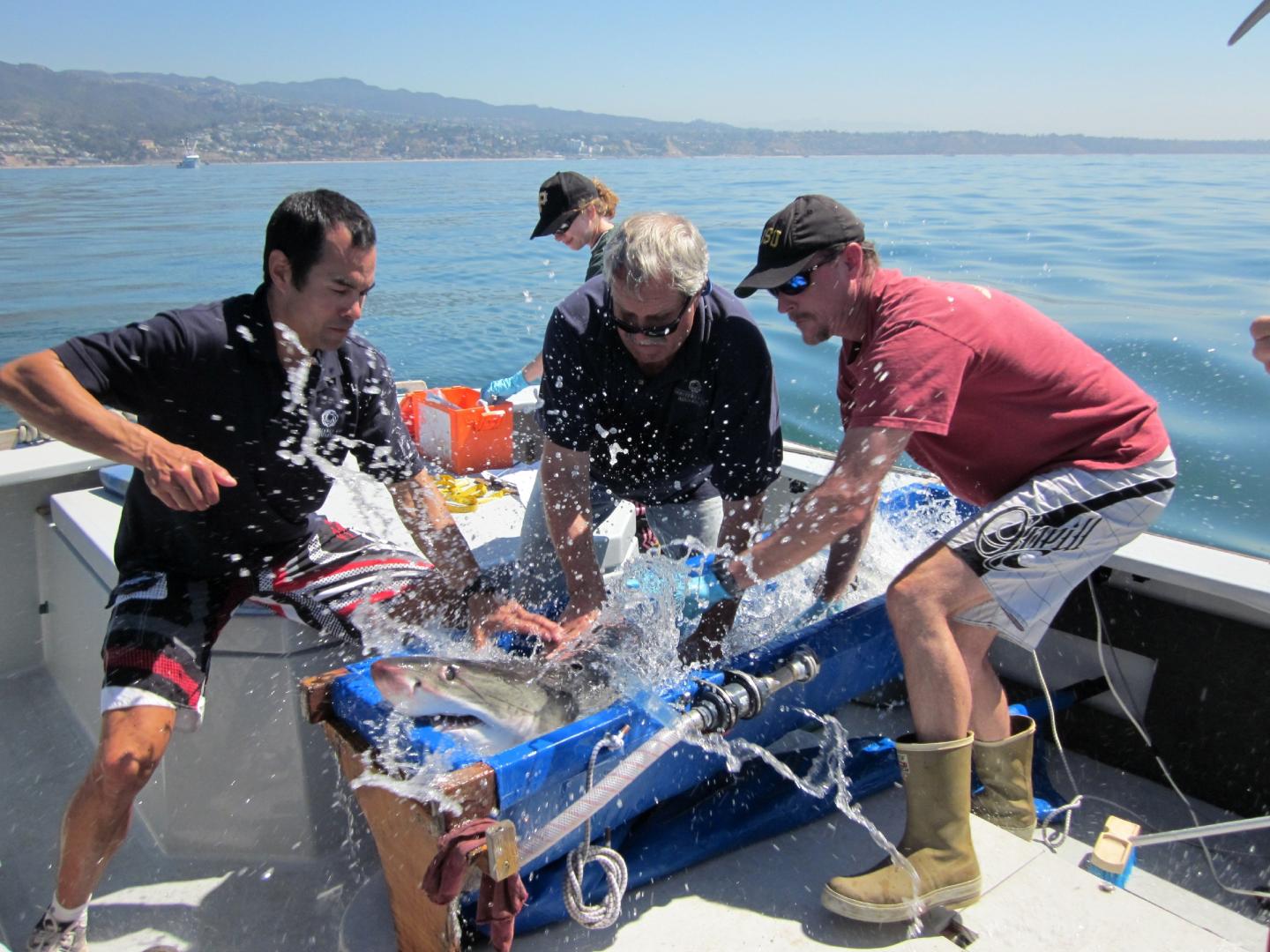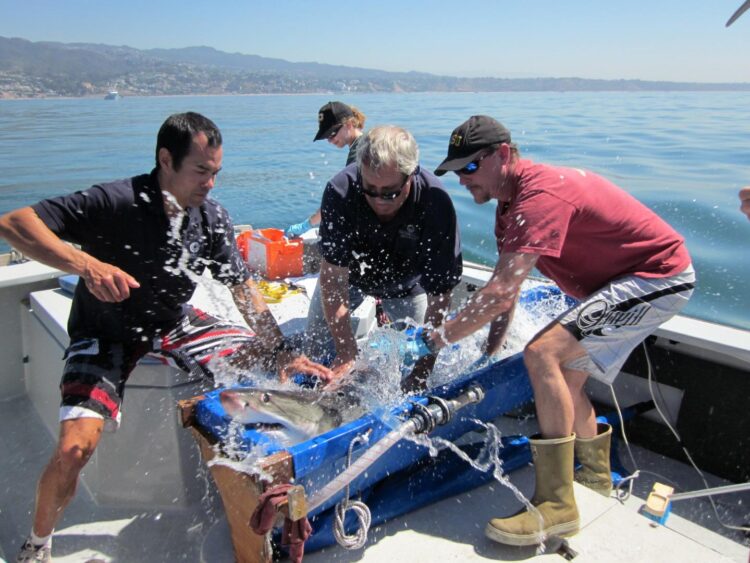
Credit: Monterey Bay Aquarium, 2010
New research led by Monterey Bay Aquarium reveals that even the revered white shark cannot escape the impacts of a changing ocean. The study, published in Scientific Reports, finds that unprecedented sightings of juvenile white sharks at the northern end of Monterey Bay signal a significant shift in the young white sharks’ range.
Researchers conclude the northward range shift demonstrates the young sharks are being subjected to a loss of suitable thermal habitat, meaning water temperatures within their preferred temperature range are becoming harder to find.
“Nature has many ways to tell us the status quo is being disrupted, but it’s up to us to listen,” said Monterey Bay Aquarium Chief Scientist Dr. Kyle Van Houtan. “These sharks – by venturing into territory where they have not historically been found – are telling us how the ocean is being affected by climate change.”
Aquarium scientists and their research partners began using electronic tags to learn about juvenile white sharks in southern California two decades ago when they were preparing to display the young white sharks to the public.
When the dramatic North Pacific marine heatwave hit the California coast between 2014-2016, these same researchers started to notice uncharacteristic sightings of juvenile white sharks in nearshore, central California waters near Aptos, California. This is farther north than young white sharks have ever been seen before as the animals historically remain in warmer waters in the southern California Current.
Water temperature in the Aptos area averages about 55 degrees Fahrenheit (13 degrees Celsius), but temperature extremes have become more common since the heatwave hit, rising as high as 69 degrees Fahrenheit (21 degrees Celsius) in August 2020.
Scientists conducted the research by collecting data from tags the Aquarium and its partners deployed on juvenile white sharks beginning in 2002 to see where the animals were spending most of their time.
The team analyzed 22 million electronic data records from 14 sharks and then compared these data to 38 years of ocean temperatures to map the cold edge of the animals’ thermal preferences, or “niche.”
The study charts the significant northward shift in the young white sharks’ range.
Between 1982 and 2013, the northernmost edge of the juveniles’ range was located near Santa Barbara (34° N). But after the marine heatwave, their range shifted dramatically north to Bodega Bay (38.5° N). Ever since, the young sharks’ range limit has hovered near Monterey (36° N).
“After studying juvenile white shark behavior and movements in southern California for the last 16 years, it is very interesting to see this northerly shift in nursery habitat use,” said Dr. Chris Lowe, a co-author of the study and director of the Shark Lab at California State University, Long Beach. “I think this is what many biologists have expected to see as the result of climate change and rising ocean temperatures. Frankly, I’ll be surprised if we don’t see this northerly shift across more species.”
Because this shift took scientists by surprise, the team turned to novel sources of data such as community science and recreational fishing records to document this northward movement of the population.
“This study would not have been possible without contributions from our community scientists and treasured Aquarium volunteers,” says Dr. Van Houtan. “Eric Mailander, a local firefighter, provided a decade of detailed logbook records of shark sightings, and volunteer Carol Galginaitis transcribed those hand-written data into an electronic database.”
The researchers say this study reinforces what scientists have been saying for years: animals and the living world are revealing the impacts of climate change.
“White sharks, otters, kelp, lobsters, corals, redwoods, monarch butterflies – these are all showing us that climate change is happening right here in our backyard,” says Dr. Van Houtan. “It’s time for us to take notice and listen to this chorus from nature. We know that greenhouse gas emissions are rapidly disrupting our climate and this is taking hold in many ways. Our study showed one example of juvenile white sharks appearing in Monterey Bay. But let’s be clear: The sharks are not the problem. Our emissions are the problem. We need to act on climate change and reduce our reliance on fossil fuels.”
###
About Monterey Bay Aquarium
With a mission to inspire conservation of the ocean, the Monterey Bay Aquarium is the most admired aquarium in the United States, a leader in science education, and a voice for ocean conservation through comprehensive programs in marine science and public policy. Everything we do works in concert to protect the future of our blue planet. More information at MontereyBayAquarium.org.
Media Contact
Emerson Brown
[email protected]
Related Journal Article
http://dx.





